Methane explosion investigated as cause for mysterious Siberian sink hole (Update)
A giant hole near a lake, surrounded by forest, filmed by an approaching helicopter.
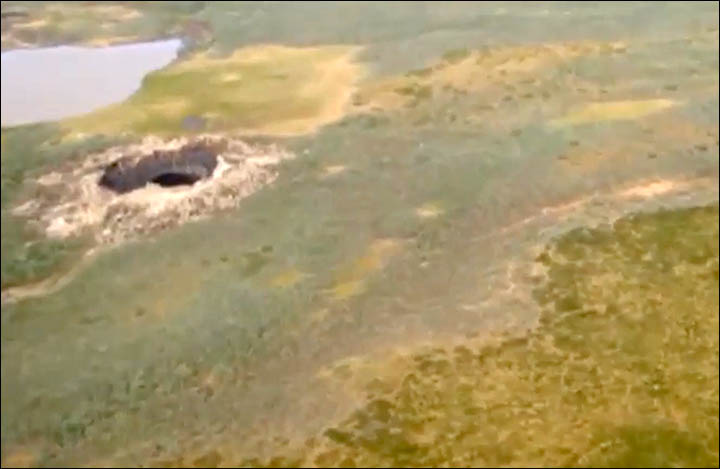
Salon: According to Anna Kurchatova, with the Sub-Arctic Scientific Research Centre, the hole could have to do with the thawing of Siberia’s permafrost, a consequence of global warming. The rapid release of gas previously trapped in the ice, she said, could have combined with sand beneath the surface to form an underground explosion.
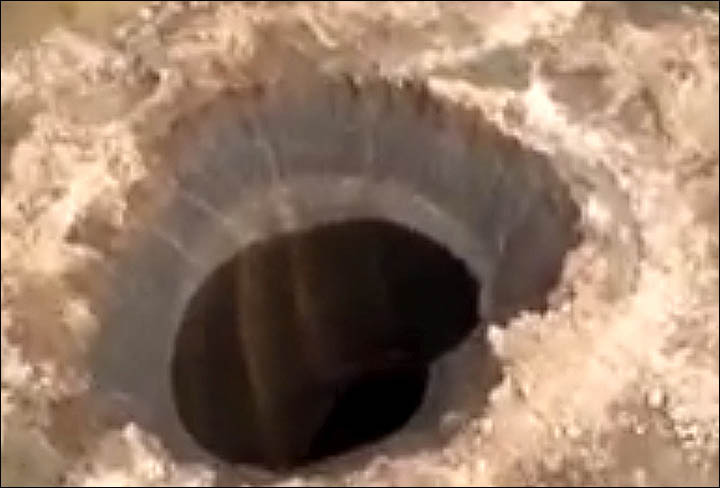
The Siberian Times, explained: The striking puncture in the earth is believed to be up to 80 metres wide but its depth is not estimated yet. A scientific team has been sent to investigate the hole and is due to arrive at the scene on Wednesday. The cause of its sudden appearance in Yamal – its name means the ‘end of the world’ in the far north of Siberia – is not yet known, though one scientific claim is that global warming may be to blame.
A report and footage highlighted by Zvezda TV says the dark colour of the crater indicates ‘some temperature processes’, without explaining more what they may mean. Others say that the darkening around the inner rim indicates its formation was accompanied by severe burning scorching the edges. There is agreement that soil around the hole was thrown out of the crater.
The expedition organised by the Yamal authorities includes two experts from the Centre for the Study of the Arctic and one from Cryosphere Institute of the Russian Academy of Sciences. They plan to take samples of soil, air and water from the scene.

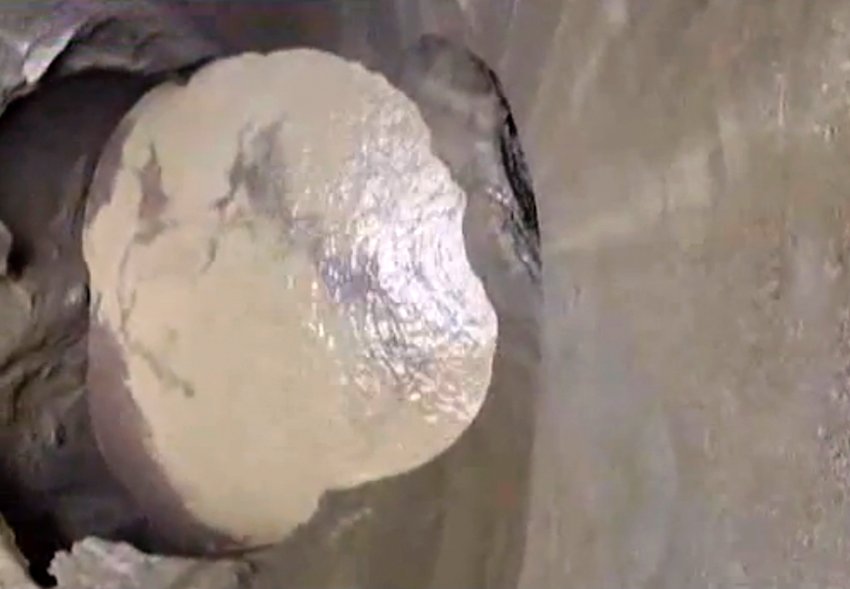

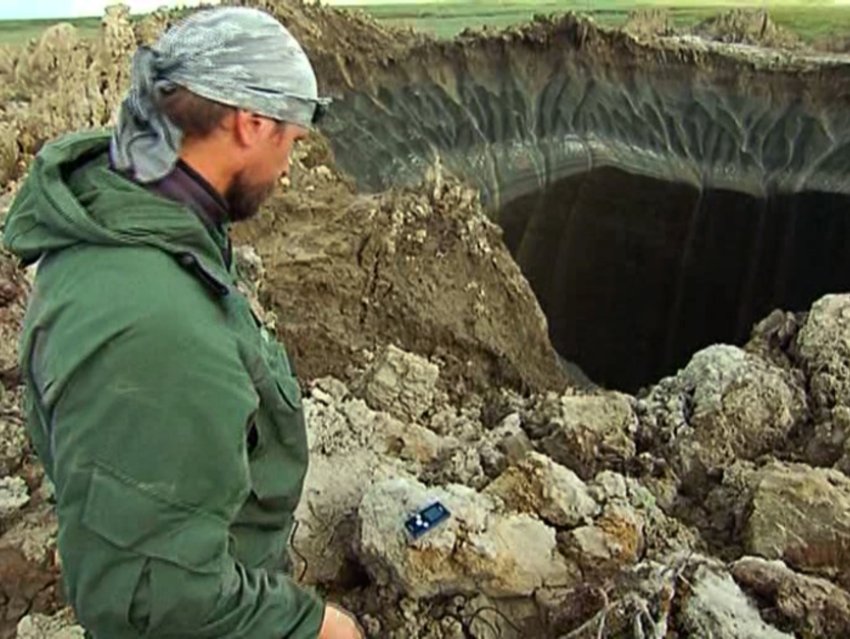
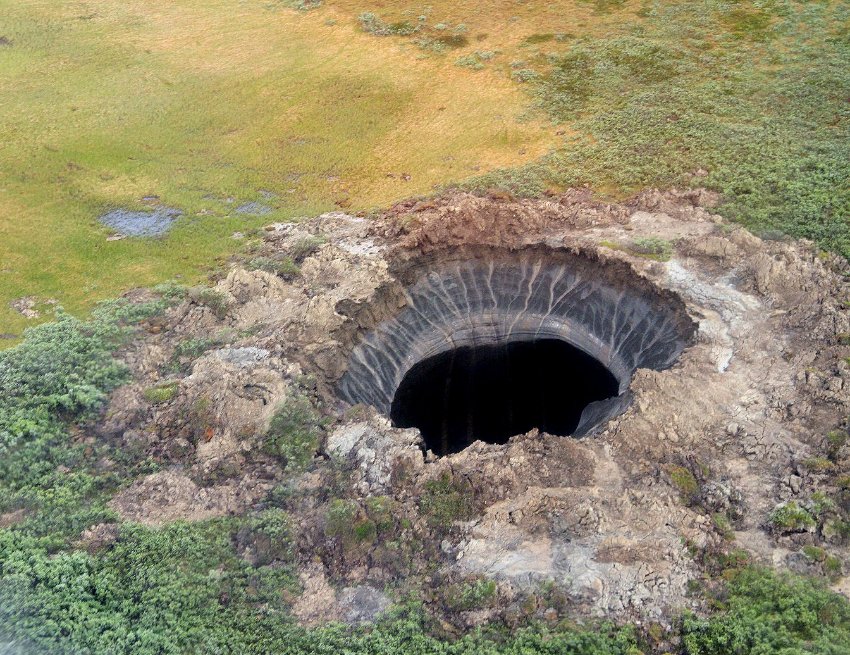
Update The Really Scary Thing About Those Jaw-Dropping Siberian Craters
Josep G. Canadell, a scientist in Australia who runs a global program to monitor greenhouse gases, told the New York Times at the time of the study. “It [Permafrost] will be a chronic source of emissions that will last hundreds of years.”
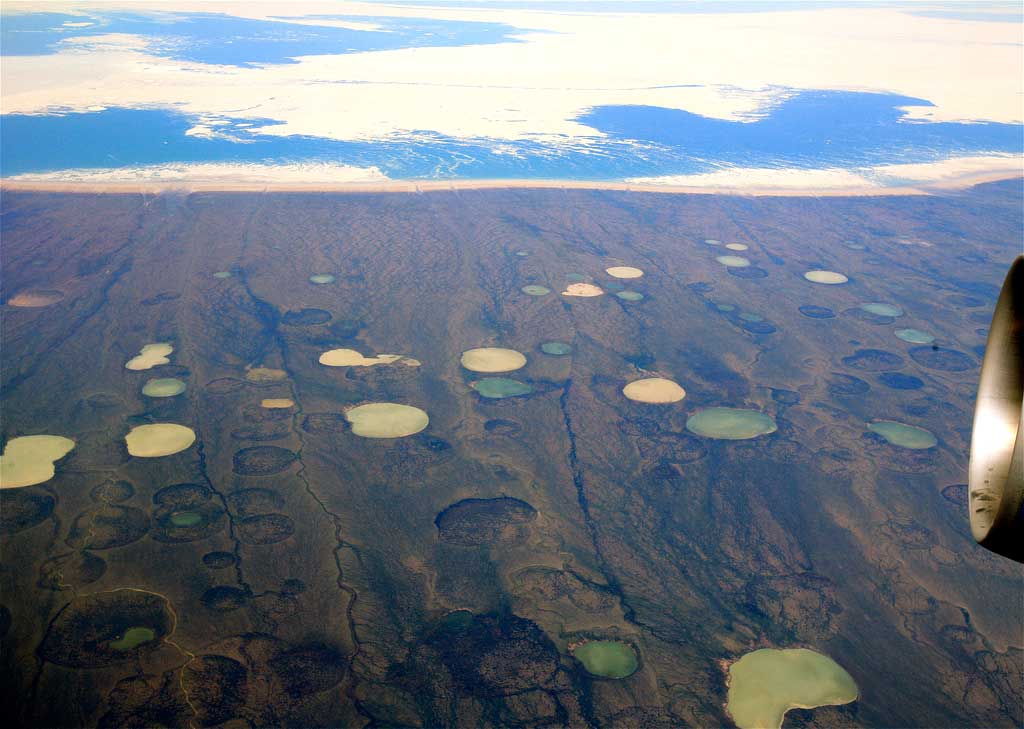
Global warming will increase permafrost and peatland thaw, which can result in collapse of plateau surfaces.
Related
- Permafrost Fires Advancing Toward Arctic Ocean Shores (August 2, 2014)
- Jet Stream So Weak Winds Are Running From Pacific to Atlantic Across the North Pole (July 30)
- New video: Permafrost thaw and the Jamal crater/sink hole (Siberia)
- Now two NEW large holes appear in Siberia (July 28, 2014)
About the Author: CLIMATE STATE
POPULAR
COMMENTS
- Robert Schreib on Electricity generation prices may increase by as much as 50% if only based on coal and gas
- Robert Schreib on China made a historic commitment to reduce its emissions of greenhouse gases
- Lee Nikki on COP30: Climate Summit 2025 – Intro Climate Action Event
- Hollie Bailey on Leaders doubled down on fossil fuels after promising to reduce climate pollution
- Malcolm R Forster on Mythbusters tests global warming theory – does CO2 warm air?